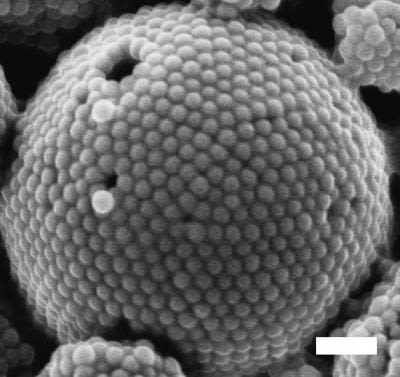
Colloids consist of at least two phases, one of whose dimensions are typically of sub-micron size. Research activities include both dispersed colloidal particles and materials formed from them. Areas of interest include the formation of core-shell particles, the thermodynamics and spatial arrangement of surfactants in multiple emulsions, and film formation from aqueous dispersions. Beyond film formation, studies are made on the influence of particle network microstructure upon macroscopic properties of films: these include strength, fracture resistance, and crack patterning.
Films
When a dispersion of stable colloidal particles is dried the particles pack and form a solid network. If the particles are weak enough they deform and a continuous film, with a particle volume fraction of unity is formed. For polymeric particles, interdiffusion of polymer chains blurs out the existence of the original particles and a continuous polymer film is created. This process is called film formation.
For harder particles, the film is weak and cracks upon drying to relieve stress. The crack pattern and spacing has been the subject of much work and we have shown how flow of solvent away from defects in the film set the spacing and lead to a stick-slip motion of the crack through the drying film..
Encapsulation
The encapsulation of one material by another, to form core-shell particles, has many applications: principally the containment, protection, and distribution of an active material.
Colloidosome Formation: The encapsulating shell is formed following particle assembly at the interface.
Dispersions
Confocal microscopy study of a water-in-oil emulsion droplet using fluorescent dyes. The yellow dye preferentially partitions into the aqueous droplet phase, while the red dye remains in the continuous oil phase.







